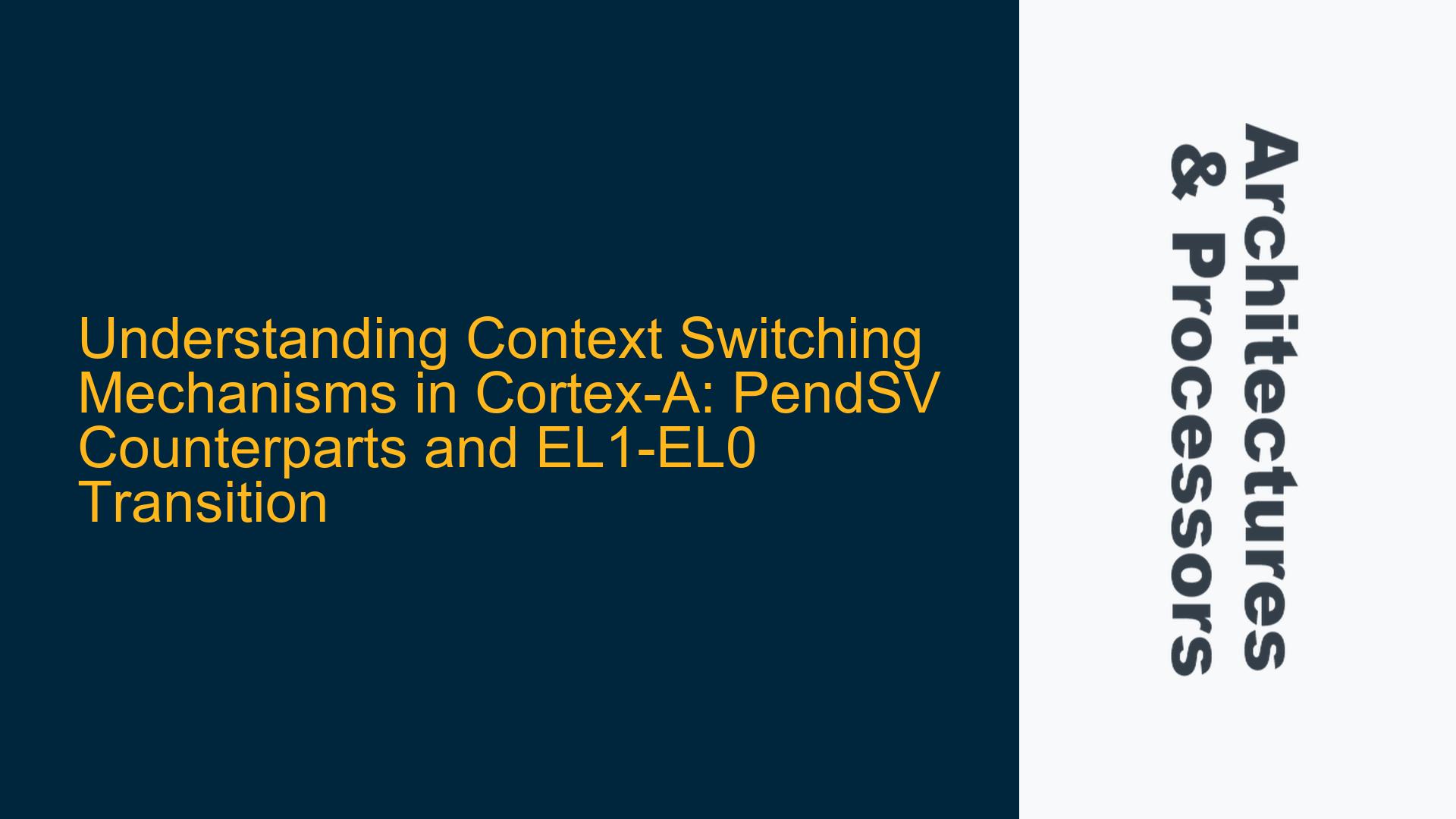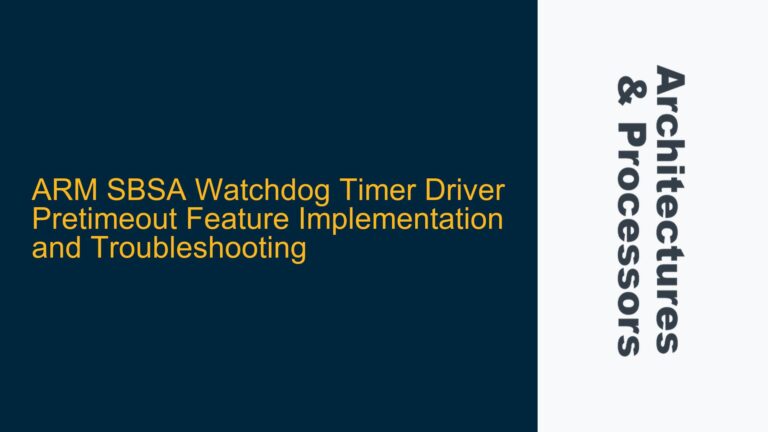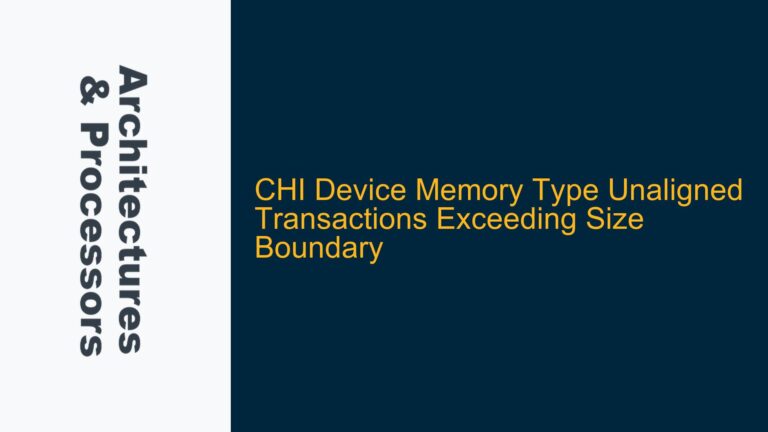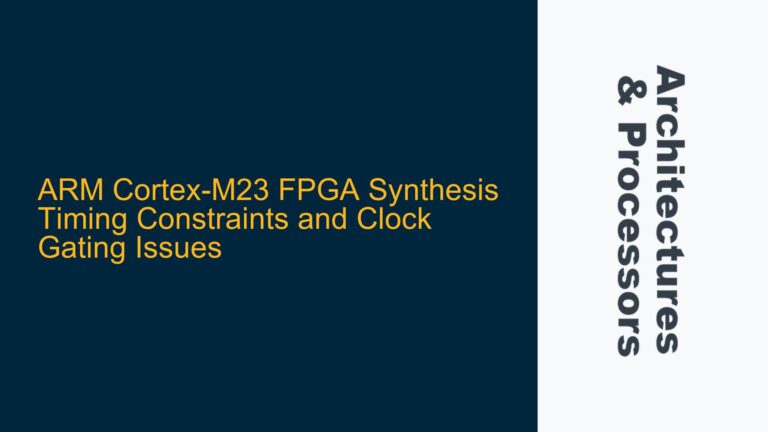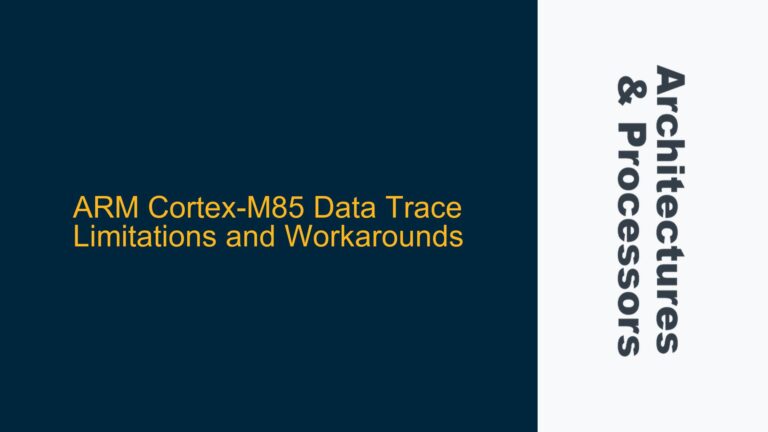Cortex-A Exception Model and Context Switching Requirements
The Cortex-A series processors, unlike their Cortex-M counterparts, employ a fundamentally different exception and interrupt handling model. Cortex-M processors utilize a simplified exception model tailored for real-time operating systems (RTOS) and embedded applications, where PendSV (Pendable Service Call) is a critical exception used for context switching. PendSV is designed to be a low-priority, software-triggered exception that ensures efficient and deterministic context switching between threads or tasks. However, Cortex-A processors, which are designed for more complex applications such as Linux-based systems, do not have a direct equivalent to PendSV. Instead, they rely on a more sophisticated exception model that operates across multiple exception levels (ELs), such as EL0 (user mode) and EL1 (kernel mode).
In Cortex-A, context switching is typically managed by the operating system kernel running in EL1. When a thread running in EL0 needs to be switched out, the kernel must handle the transition between EL0 and EL1, save the current thread’s context, and restore the context of the next thread. This process is more complex than in Cortex-M due to the additional architectural features of Cortex-A, such as virtual memory management, caches, and multiple privilege levels. The absence of a PendSV-like mechanism in Cortex-A raises the question of how to achieve efficient and deterministic context switching, particularly when transitioning from EL1 back to EL0.
The challenge lies in ensuring that the context switching mechanism is both efficient and compatible with the Cortex-A exception model. This requires a deep understanding of the architectural differences between Cortex-M and Cortex-A, as well as the specific requirements for implementing context switching in a multi-threaded environment.
Differences in Exception Handling Between Cortex-M and Cortex-A
The Cortex-M and Cortex-A processors differ significantly in their exception handling models, which directly impacts how context switching is implemented. In Cortex-M, exceptions are handled using a fixed priority vector table, where PendSV is explicitly designed for deferred context switching. PendSV is triggered by software and has the lowest priority among exceptions, ensuring that it only executes when no higher-priority exceptions are pending. This design allows for efficient context switching without disrupting time-critical operations.
In contrast, Cortex-A processors use a more complex exception model that supports multiple exception levels (ELs) and a flexible interrupt controller (such as the GIC, Generic Interrupt Controller). Exceptions in Cortex-A are categorized into synchronous exceptions (e.g., SVC instructions, data aborts) and asynchronous exceptions (e.g., IRQs and FIQs). The absence of a PendSV-like exception in Cortex-A means that context switching must be managed differently, typically through a combination of software and hardware mechanisms.
One key difference is the role of the interrupt controller in Cortex-A. The GIC allows for dynamic prioritization and routing of interrupts, which can be leveraged to implement a context switching mechanism. However, this requires careful configuration to ensure that the context switching process does not introduce unnecessary latency or disrupt other critical operations. Additionally, Cortex-A processors often operate in environments with virtual memory, which adds another layer of complexity to context switching. The translation lookaside buffer (TLB) and caches must be managed during context switches to ensure consistency and avoid performance degradation.
Another important consideration is the transition between exception levels. In Cortex-A, context switching typically involves transitioning from EL0 to EL1 and back. This transition must be handled carefully to ensure that the processor state is saved and restored correctly. The use of system registers and the stack pointer must be managed explicitly, as the behavior of these registers can vary between exception levels.
Implementing Efficient Context Switching in Cortex-A Using IRQ Prioritization
To achieve efficient context switching in Cortex-A, a mechanism similar to PendSV can be implemented using IRQ prioritization and software-triggered interrupts. The goal is to create a low-priority, software-controlled interrupt that can be used to defer context switching until it is safe to do so. This approach mimics the behavior of PendSV in Cortex-M while leveraging the capabilities of the Cortex-A architecture.
The first step is to configure the GIC to support a low-priority IRQ that can be used for context switching. This IRQ should be assigned a priority lower than all other critical interrupts to ensure that it does not interfere with time-sensitive operations. The IRQ handler in EL1 can then be designed to perform the context switch, saving the current thread’s state and restoring the state of the next thread.
To trigger the context switch, the kernel can use a software-generated interrupt (SGI) to assert the low-priority IRQ. This can be done using the GIC’s software interrupt generation feature, which allows an interrupt to be triggered programmatically. By using an SGI, the kernel can ensure that the context switch is deferred until the appropriate time, similar to how PendSV operates in Cortex-M.
During the IRQ handler execution, the kernel must save the current thread’s context, including the general-purpose registers, stack pointer, and program counter. This state is typically stored in a thread control block (TCB) associated with the current thread. The kernel then selects the next thread to run, restores its context from the corresponding TCB, and resumes execution in EL0.
One critical aspect of this approach is ensuring that the context switch is performed atomically and without introducing race conditions. This requires careful management of the processor state and the use of synchronization primitives, such as disabling interrupts during critical sections of the context switch code. Additionally, the kernel must handle any pending exceptions or interrupts that may have occurred during the context switch process.
Another consideration is the management of the TLB and caches during context switches. Since Cortex-A processors often operate with virtual memory, the TLB must be invalidated or updated when switching between threads to ensure that the correct memory mappings are used. Similarly, the caches must be managed to avoid stale data or inconsistencies. This can be achieved using cache maintenance operations and barriers to ensure that the processor’s memory view is consistent.
By implementing a low-priority IRQ and leveraging the GIC’s capabilities, it is possible to achieve efficient and deterministic context switching in Cortex-A. This approach provides a mechanism similar to PendSV while accommodating the architectural differences of Cortex-A processors. However, it requires careful design and testing to ensure that the context switching process is robust and performs well under all conditions.
